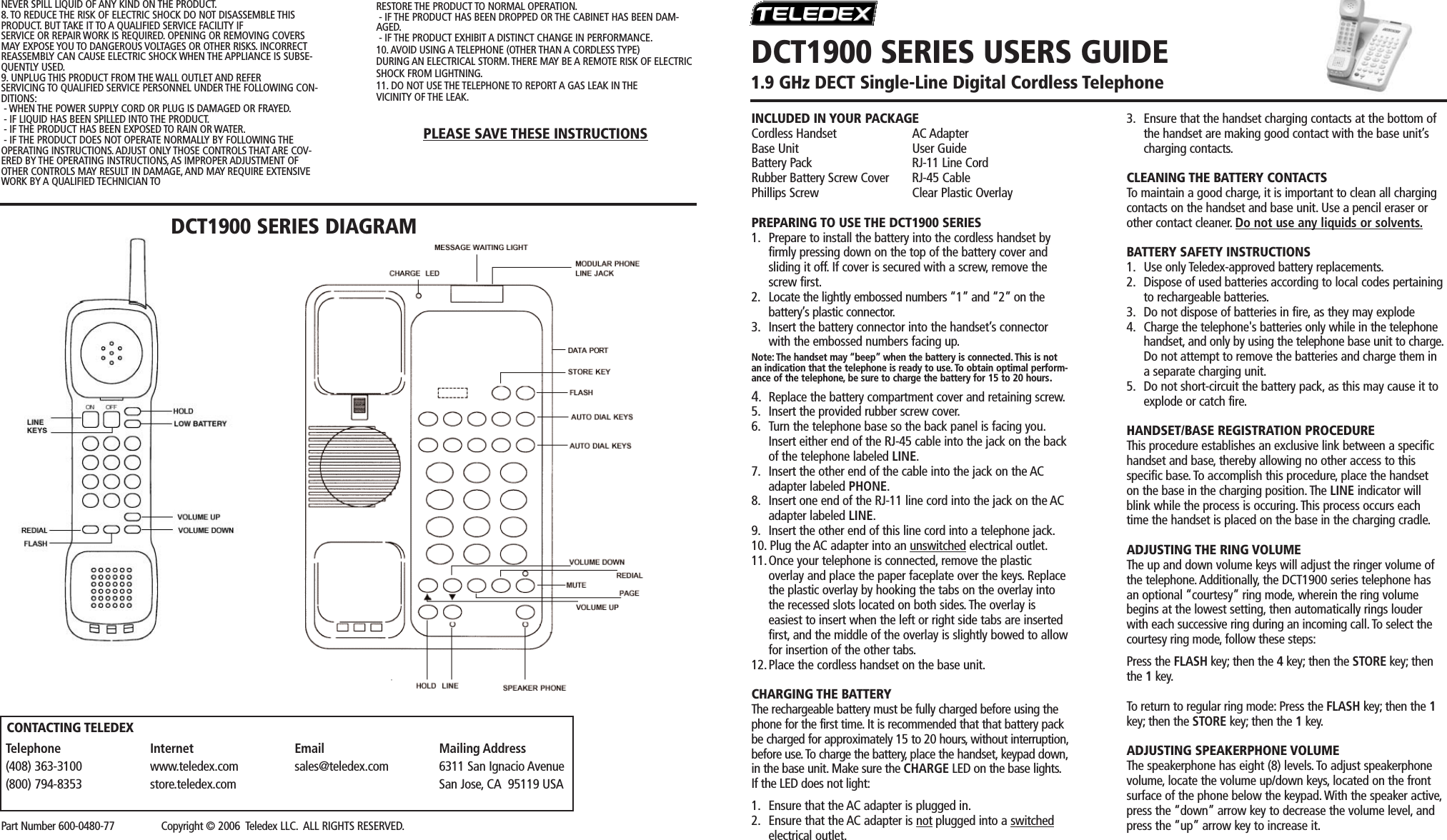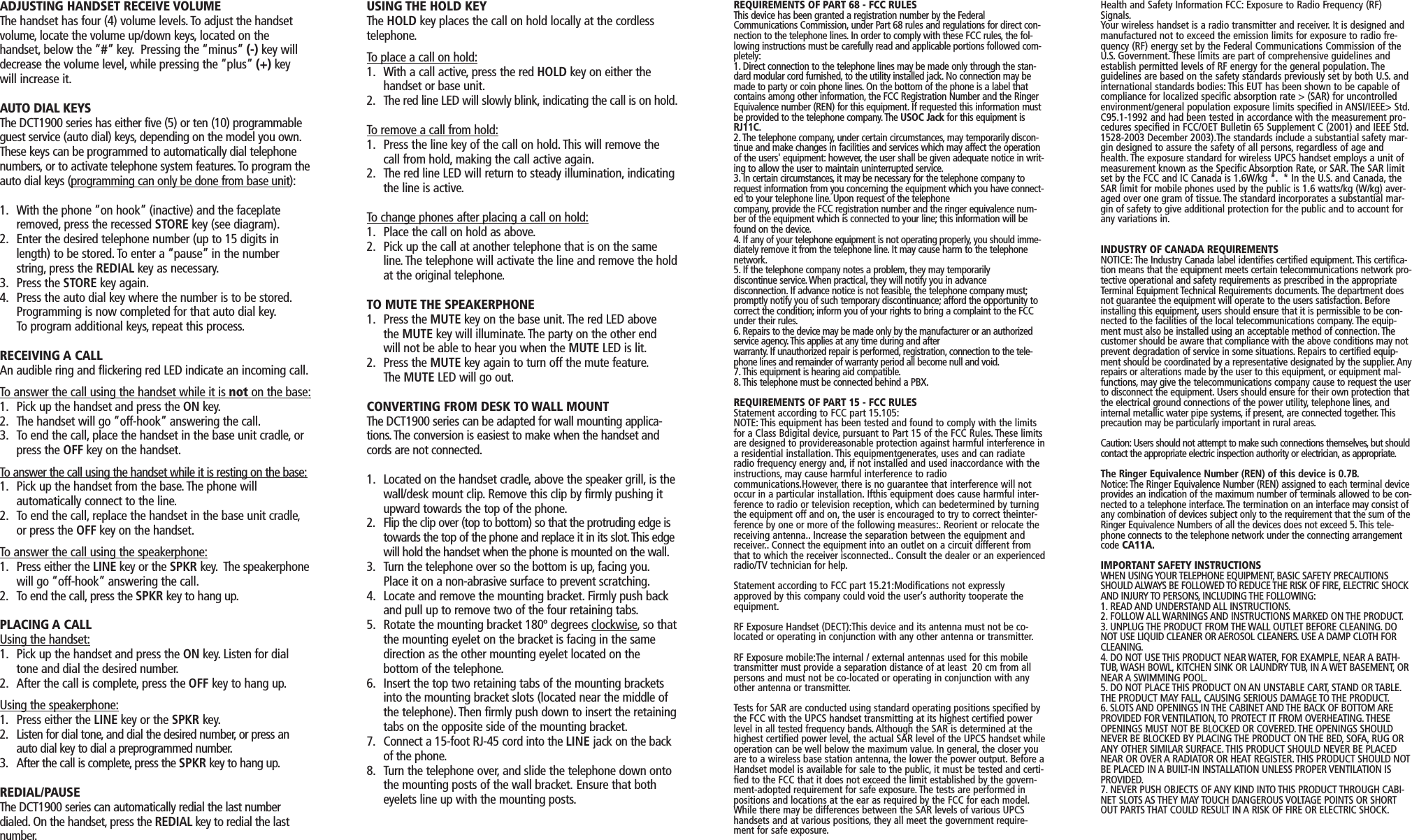Teledex DCT2900 2LineCordlessSpeakerphon 1.9GHzDECT DCT2900 series User Manual UserMan 1line
Teledex LLC 2LineCordlessSpeakerphon 1.9GHzDECT DCT2900 series UserMan 1line
Teledex >
Contents
- 1. UserMan Singelline
- 2. UserMan Twoline
- 3. UserMan 1line
- 4. UserMan 2line
UserMan 1line

